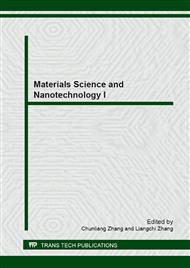p.519
p.523
p.527
p.531
p.535
p.539
p.543
p.547
p.551
Role of Interfacial Surfactant Layers in the Thermal Conductivity of Nanofluids
Abstract:
Various mechanisms and correlations have been developed for prediction of thermal conductivity of nano-suspensions. However, seldom theoretical researches on thermal conductivity of nanofluids containing surfactant are found. In this work, a thermal conductivity prediction-model of nanofluid containing surfactants is proposed based on Leong et al.’s model and Langmuir adsorption theory by considering the interfacial surfactant layers. The thickness of the interfacial layer is defined by Langmuir adsorption theory. Compared with the experimental data available in the literature on thermal conductivity of nanofluid containing surfactants, the calculated values on the proposed model have been verified that the proposed models show reasonably good agreement with the experimental results and give better predictions for the effective thermal conductivity of nanofluids compared to existing classical models.
Info:
Periodical:
Pages:
535-538
Citation:
Online since:
December 2012
Authors:
Keywords:
Price:
Сopyright:
© 2013 Trans Tech Publications Ltd. All Rights Reserved
Share:
Citation:


